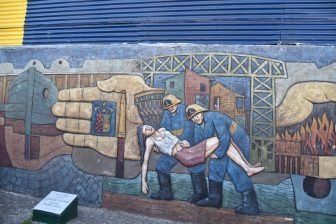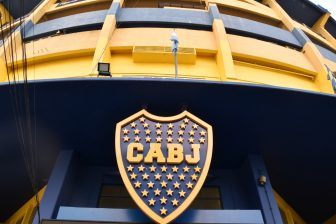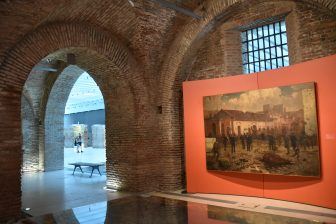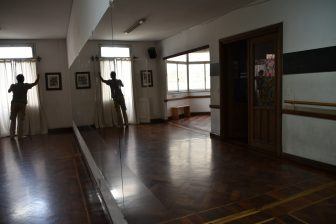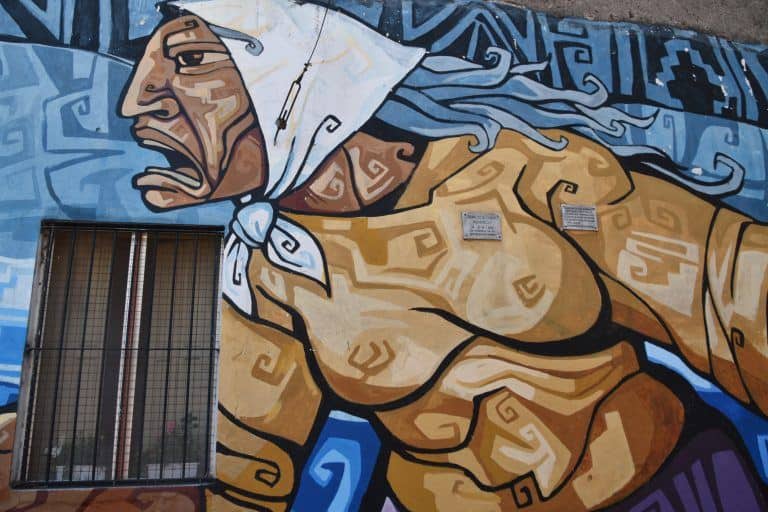
I continue talking about the walking tour we had in La Boca in Buenos Aires, the capital city of Argentina.
In a place a little bit away from the main Caminito Street, there was a children’s playground where they could play, for example, basketball.
This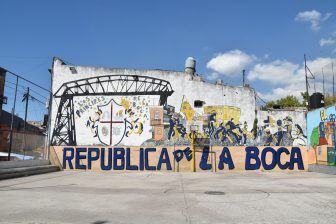
When the authorities started talking about the redevelopment of this playground, the community all got together to oppose it, so the playground is still there.
On one wall of this playground, it says “Republica de La Boca”.
Apparently this republic really existed.
At one point in the late 19th century, the people of La Boca who had been treated badly by the authorities stood up, blockaded the area and declared independence from Argentina.
Due to the fact that, in those days, most of the residents were from Genoa in Italy, they put up the flag of Genoa, which is red cross on a white background, as their new republic’s flag.
By the way, this pattern of the flag is used in many places such as England and Milan in Italy.
Of course, the Argentinian authorities did not recognise this declaration of independence. The president then came into the area with the military, so The Republic of La Boca lasted only 72 hours apparently.
After visiting this playground, we went to another square where there was a mural with some firefighters depicted.
In La Boca, where the houses were all shacks, there were frequent fires, but because the city’s fire brigade did not care much about them, the damage was often very severe.
So the community itself organised a fire brigade and that became the first private fire brigade in South America.
The next murals we saw were very powerful.
These represent not only La Boca but the whole of Argentina, which experienced a terrible tragedy during the military gove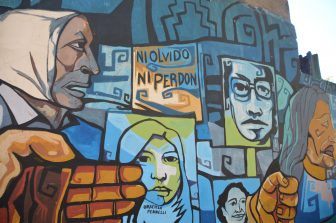
We have already learned that, during this period, a great many people who upheld left-wing ideologies were arrested and subsequently disappeared.
At that time, apparently more than two people standing and talking together in public places was regarded as a meeting and was banned.
In those circumstances, the mothers of the missing people simply started walking in Plaza de Mayo in front of the presidential office one by one, wearing nappies as scarves, holding the photos of their missing children.
That was their quiet but powerful protest and this became a mass movement.
They still walk there every week apparently.
This movement led to the creation of the world’s first DNA bank. They are still trying to find the missing children who were born in the concentration camps and given to willing couples on the ruler’s side.
What surprised me to discover was that in the military government, there were many ex-Nazi people who had fled from Europe and been accepted in this country.
Because of that, in the concentration camps, the Jewish, gay and non-white people were treated even more badly than the white political prisoners, according to our guide.
Our walking tour ended in front of Bombonera, the stadium of the Boca Juniors, a world famous football team.
If you are a fan, you would love to watch a game here, but to get the proper priced tickets, you have to be a member of the fan club. To become a member, you have to wait for at least 10 years.
You can pay some outrageous price to a tout to get a ticket, though.
But the notorious hooligans usually sit in the upper seats and they urinate into the beer cans and throw them at the people below.
[ Mar.2018 ]

